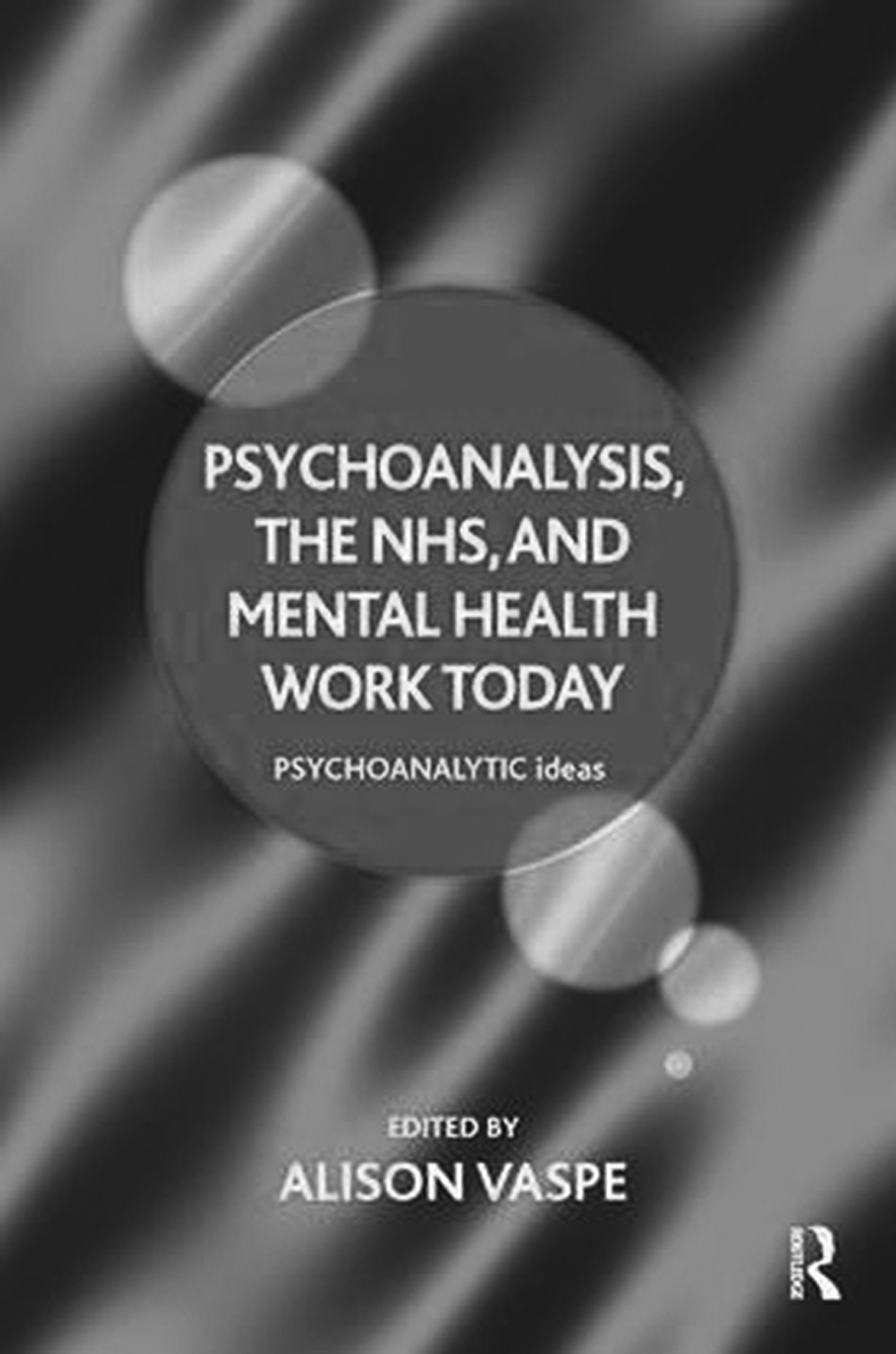This is a timely and thoughtfully written book bringing together psychoanalytic themes as applied to the work of mental health services in the contemporary National Health Service (NHS).
The book does this by gathering together authors working in a variety of NHS settings. Primary care general practitioner services, a specialist trauma service, Child and Adolescent Mental Health Services (CAMHS), women's intensive care services, a specialist personality disorder service and organisational consultancy. The authors illustrate the rich understanding a psychoanalytic perspective brings to our clinical work with complex mental health problems, and the psychological impact mental health work has on front-line staff, their organisations, and consequently the importance of having reflective spaces. The first five chapters focus on psychoanalytic work with patients and the second on staff needs and organisational challenges.
Core psychoanalytic themes weave threads through the book and provide continuity of thought to the authors' narratives. The reader is introduced to varied understandings of the notion of ‘containment’ in the first chapter, incorporating Bion's original theorisations of the concept,Reference Bion1 that help a multidisciplinary team, in a general practice setting, to cohere around in their regular reflective practice meetings. This theme of containment reverberates throughout the book. For Bion this was how the mother, the container, made sense of the unspoken communications from her infant – through a process of reverie; digesting the communication and then communicating this digested communication back to her infant in a way that shows the communication has been received and understood. This process of reverie that the mother undertakes links to the other fundamental concept of countertransference,Reference Joseph2 and that a receptive awareness of which can fundamentally inform our clinical and organisational work. Jo Stubley movingly illustrates this in the clinical work of the specialist trauma service at the Tavistock clinic. Shuttleworth and colleagues in a chapter on ‘Thinking psychoanalytically about mental health services for children, adolescents, and their parents’ examines how the ‘business management approach’ (p. 40) to the reorganisation of CAMHS, with the reification of treatment protocols, the importance of being able to establish a relationship with young people who may not have ‘the capacity to express need, but only what is noticed and felt by the clinician in their presence’ (p. 44), can be threatened. The consequence is a loss of understanding for the young person seeking help.
Careful observation of her unit, a female psychiatric intensive care unit, and attention to her emotional reaction (countertransference) and those of her nursing staff shines through in the writing and work of the late Siobhan O'Connor. This theme of applied psychoanalytic thinking and its relevance to everyday psychiatric practice is continued in the chapter ‘Reflective psychiatry’. Mills & Smith, ‘psychoanalytically minded psychiatrists’, illustrate through clinical vignettes of familiar scenarios the pressures to act that psychiatrists are often faced with and how good psychiatric practice is informed by psychoanalytic understanding.
Christopher Scanlon's chapter ‘Working with dilemma and disappointment in difficult places’ is more demanding of the reader as he outlines his notion of ‘the dilemmatic space’ that opens up when conversations about things that ‘do not fit together’ occur, as he shows the tensions that arise in teams and organisations, when working with traumatised people and the ‘disappointing–disappointed’ dynamic, that occurs for both practitioners and their patients.
Wilhelm Skogstad's experience of being ‘an observing participant in a therapeutic institution’ may bring up familiar themes for readers. In his chapter he vividly conveys how in his role as head of service of the Cassel Hospital, that faced a threat to its survival, paralleled by the patients’ struggles with severe self-harm and suicidality, he had to keep in mind the dynamics of the ‘total system’, rather than being drawn into focusing on one aspect, for example at an individual patient level.
The theme of working within an organisational context is illustrated in the editor, Alison Vaspe's own chapter and her experience of providing an in-house psychotherapy service for staff. She powerfully illustrates the complexities of the therapeutic task with a staff member who is subject to a long enquiry into her practice following the death of one of her patients.
The last two chapters take the book back to where it started in primary care in a dialogue between Clare Gerada and Marilyn Miller and then a reflection on this by Miller.
It is difficult to condense all the contributions of the book into ‘a review’. Each chapter has much to commend in its own right. I would recommend this excellent book to colleagues; it is rich in its contributions at a patient, team and institutional level. It illustrates that applied psychoanalytic work and thought is alive in the NHS and integral to providing caring, thoughtful and effective contemporary mental services.




eLetters
No eLetters have been published for this article.